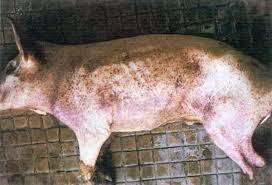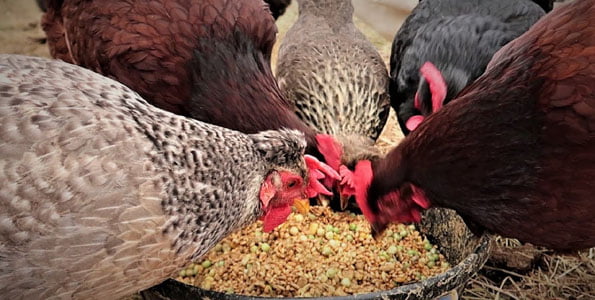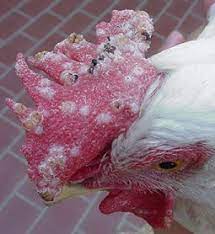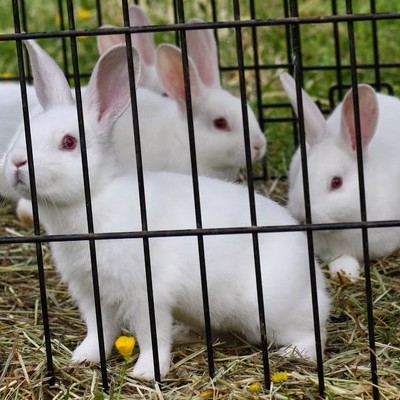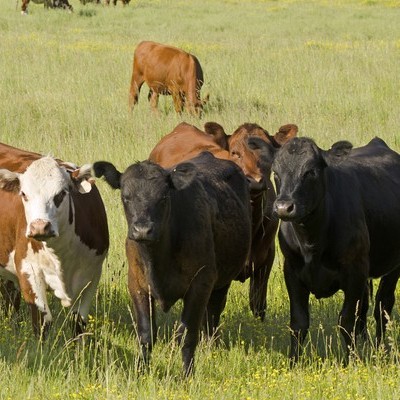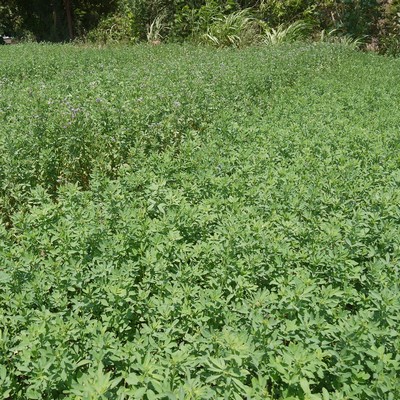MAGONJWA HATARI KWA NGURUWE. Leo tutaangazia magonjwa mawili ya nguruwe ambayo ni. 1. Kimeta ( Anthrax) 2. Ugonjwa wa ngozi. 1. Kimeta ( Anthrax) Ugonjwa huu husababishwa na bacteria wajulikanao kama Bacillus anthracis, wadudu hawa wanabaki kuwa hai kwa muda mrefu na wanaweza kuwa kwenye udongo wakiwa hai kwa kipindi cha miaka mingi Dalili za ugonjwa. -uvimbe kwenye shingo/mgongo. -Homa -Kutoa kinyesi chenye damu. -Kupumua kwa tabu -Kifo cha ghafla -Mnyama aliyekufa kwa kimeta damu haigandi ( Huendelea kutoka) katika maeneo ya wazi kama puani, mdomoni na masikioni na hata…
Author: Mshindo Media
Ratiba ya Chanjo kwa kuku (new) I Mshindo Media.
1. SIKU 1. Baada ya vifaranga kutotoleshwa ndani ya siku moja wapewe glucose kwa muda wa masaa mawili. Glucose huchanganywa katika maji na kupewa vifaranga hawa na baada ya hapo vifaranga wapewe mchanganyiko wa vitamins mfano ni AMINOVIT na OTC plus. Pia hii huchanganywa na maji. Vifaranga wawekwe katika eneo lenye joto wastani na safi. Baada ya hapo siku ya pili na kuendelea vifaranga wapewe. 2. SIKU YA 7. vifaranga wapatiwe chanjo ya NEWCASTLE (KIDERI). chanjo hii huchanganywa na maji safi katika eneo lenye kivuli kIsha kupewa vifaranga kwa muda wa…
Gharama Katika Ufugaji Kuku wa Nyama (new) I Mshindo Media.
GHARAMA UFUGAJI WA KUKU WA NYAMA Katika ufugaji inawenzekana umekuwa ukiona Miradi ya watu jinsi ilivyo mikubwa. Unapenda sana kutembelea katika miradi mbalimbali, pia na wewe unawazo la kufuga lakini unashindwa kujua ni mtaji sh ngapi utakao tosha kuanzia mradi wa ufugaji kuku. Ndugu sio lazima wewe kuanzisha mradi Mkubwa kama unayo iona ya wengine. Hao mpaka kufikia hapo wamechukua muda kidogo na wamekutana na changamoto nyingi. Hivyo hata kwa mtaji mdogo kabisa unaweza azisha mradi wako wa ufugaji kuku na baada ya muda nawewe utakuja kutembelewa katika mradi wako.Katika…
UFUGAJI WA KUKU WA KIENYEJI NA MASOKO YAKE (new) I Mshindo media
Biashara ya Ufugaji wa Kuku wa kienyeji na Masoko yake Kuna usemi flani unatumiwa na watu wengi sana. unasema; “kazi ndio msingi wa maendeleo ya mtu yeyote” . Hata mimi nakubaliana na usemi huu kwani ni kweli kabisa kazi ndio msingi wa hatua yoyote ya maendeleo ya mtu yeyote chini ya msingi mkuu ambao ni Mungu. Kinyume chake, asiyefanya kazi (ya kuajiriwa/kujiajiri) basi atabaki kuwa maskini na mtu wa shida ya kipato, mahusiano mabaya na wanadamu wenzako, kuwa tegemezi nk. Kwa kuwa tunatamani sana kutoka katika kongwa hili la umasikini…
UFUGAJI WA NGURUWE NA FAIDA ZAKE (new) I Mshindo media
Utangulizi Nguruwe ni mnyama ambaye hutumika kama chakula / mbonga na pia ni zao la biashara kwa mfugaji, mjasirimali na mfanyabiashara. NGURUWE HUTEGEMEA SANA MAMBO YAFUATAYO 1 . Banda imara ni rafiki kwake 2. Usafi ni muhimu sana katika banda la Nguruwe 3 Mchaganyo bora wa chakula 4. Tiba bora na kinga 5. Maji na Lishe ( access ya vyakula Muhimu kwake ) CHANGAMOTO KATIKA UFUGAJI WA NGURUWE KUNACHAGAMOTO ZAKE LAKINI ZAWEZA KUTATULIWA KWA KUFATA MAMBO KADHAA. Katika ufugaji wa nguruwe kuna chagamoto ya vifo vya nguruwe wachanga ambao hupunguza faida ya biashara ya nguruwe kwa kupunguza…
CHANJO YA NDUI (FOWL POX) new I Mshindo media
MSHINDO MEDIA Wanakupatia huduma ya kuchanja kuku wako chanjo ya NDUI (Fowl Pox) bule kupitia website yetu hapa .Usisubiri kuku wako waugue ndiyo uwachanje Chanjo ya Ndui.Tuwahi mapema kuwachanja kuku wetu NDUI ili wawe na afya nzuri na tupate manufaa ya kufuga kuku.Huduma zetu ni za uhakika na popote tutakufikia. FAHAMU MAANA YA NDUI YA KUKU…….. Ndui ni ugonjwa unaosababishwa na virus aina ya AvipoxVirus ambao hushambulia zaidi kuku na jamii yote ya ndege, katika umri wowote wa kuku ndui inaweza ikampata kuku. Virusi hivi vya Ndui husambaa kwa njia nyingi ikiwemo……
SABABU ZA CHANJO KUSHINDWA KUMLINDA MNYAMA (KUFANYA KAZI). I Mshindo Media new
Ushawahi kujiuliza Ama kusikia mtu akisema, “ Mbona nimechanja na Kuku wangu bado wakaugua na Kufa!”Ama Mganga/Daktari analaumiwa “Mbona Mbwa/paka wangu ameugua na Chanjo ulitoa?” Kabla ya kupata hayo majibu tujiulize kwanza CHANJO ni NINI? Chanjo ni maandalizi ya kibailojia ambayo hutoa kingamwili(ulinzi) dhidi ya ugonjwa fulani, Kinga hiyo huwa ya Muda fulani au Maisha yote. Chanjo kwa kawaida ni vijidudu(Antigen) hai ama mfu ambavyo vinavyosababisha ugonjwa huo ila huwa Vimefubaishwa ili kutokuleta madhara katika mwili na hutolewa katika kiwango ambacho huweza kuamsha kinga ya mwili dhidi ya ugonjwa husika.Mfano.…
List of dairy cattle breeds (new) I Mshindo media
This list is incomplete; you can help by expanding it.Dairy cattle are those primarily raised for their milk as part of dairy farming. Breed Country of Origin Output per Day Other Gallons Litres Ayrshire cattle Scotland 5 19 Can be used for foraging Brown Swiss Switzerland 8 30 Second largest amount of milk produced of any dairy cattle breed. Buša cattle Croatia 1 3.8 Canadienne cattle Canada 2.7 10.4 Very rare breed. Dairy Shorthorn England 7.6 29 Also called the milking shorthorn. Dexter cattle Ireland 2 7.5 Very small in size. Used in domestic farms. Guernsey…
Poultry Management and Care (new) I Mshindo Media
Poultry Guide1. Select your Poultry Niche The poultry industry is a broad niche. There are many sub-sectors in the poultry industry which you can tap into. When poultry farming is mentioned, a lot of people take that to mean chicken rearing or turkey rearing alone but poultry farming is a very wide business with different aspects. Below are niches in the poultry business: Egg production (Layers breeding)Meat production (Broilers breeding)Chicken breeding (Hatchery)Poultry feed productionPoultry equipment manufacturingEgg and meat processing, packaging and marketingPoultry marketing and consultancy So, you see that poultry…
Dog castration ,procedures and its Care (new) I Mshindo Media
Dog castration ,procedures and its Care Castrating or neutering a male dog is an operation requiring a general anaesthetic.Both testicles are removed. As with all operations, the advantages and disadvantages should be considered carefully before deciding. Your own vet is the best person to advise you about your particular dog, but the following general advice may also help.The main advantages of castrating a male dog are The main disadvantages of having your dog castrated are the risks associated with any general anaesthetic and any operation, but these are very small…
CHICKEN – LAYERS FARMING
The history of layer farming is a long and complex one, dating back to the domestication of chickens in ancient times. In the early days, chickens were kept for their meat and eggs, but it was not until the 19th century that commercial egg production began to take off. In the early 20th century, commercial egg production continued to grow, and by the 1950s, the United States was producing more eggs than any other country in the world. Poultry farming is the raising of domesticated birds such as chickens, turkeys, ducks, and geese for the purpose…
SHEEP FARMING (new)
Sheep were first domesticated in the Middle East around 11,000 years ago. They were originally raised for their meat and milk, but their wool soon became an important commodity as well. Sheep were introduced to Europe around 7,000 years ago, and to North America by European settlers in the 16th century. Sheep farming has played an important role in human history. Wool was used to make clothing, blankets, and other textiles. Sheep were also used as a source of meat and milk. In some cultures, sheep were also used for…
RABBIT FARMING (new)
The history of rabbit farming is long and varied. Rabbits were first domesticated in Spain by the Romans around 200 BC. They were kept for their meat and fur, and the practice spread throughout Europe. In the Middle Ages, rabbits were also kept by monks for food, and they were often used as a source of meat during Lent. In the 19th century, rabbit farming became more widespread as a commercial enterprise. This was due in part to the development of new breeds of rabbits that were better suited for…
PIG FARMING (new)
The history of pig farming dates back to ancient times. Pigs were first domesticated in Asia and Europe around 9,000 years ago. They were raised for their meat, fat, and hides. Pigs were also used as a source of labor, as they could be trained to plow fields and carry heavy loads. In Egypt, Pigs were raised in ancient Egypt for meat, fat, and leather. They were also used as a source of manure, which was used to fertilize crops. Pigs were considered to be unclean animals by the Egyptians,…
GOAT FARMING (new)
The goat is a versatile animal. Goats were the first animals domesticated by man in 10,000 B.C. Most goats can be found in Asia and the Mid-East. Goats were the first animals to be used for milk by humans. There are over 210 breeds of goats in the world. There are approximately 450 million goats around the world. Goats were first brought to America by Columbus in 1493. The female goat is called a “doe” or “nanny.”The male goat is called a “buck” or “billy.”A castrated male goat is called…
DAIRY CATTLE FARMING (new)
The history of dairy farming dates back to the early days of human civilization. The first evidence of dairy farming can be found in the Middle East, where people were milking goats and sheep as early as 8,000 BC. Dairy farming spread to other parts of the world, including Europe, Asia, and Africa, as people migrated and traded with each other. In the early days of dairy farming, milk was consumed fresh or made into simple dairy products, such as cheese and yogurt. As technology advanced, dairy farmers began to…
BEEF CATTLE FARMING (new)
The history of beef cattle farming dates back to the domestication of cattle in the Middle East and Europe over 10,000 years ago. Cattle were originally raised for their meat, milk, and labor, and they played an important role in the development of human civilization. In the Americas, cattle were first introduced by Spanish explorers in the 16th century. Today, beef cattle farming is a major industry in many parts of the world. The United States is the world’s largest producer of beef, followed by Brazil, China, and India. In africa,…
LUCERNE FARMING/Fodder Farming (new)
Lucerne, also known as alfalfa, is a perennial legume that is grown for its forage and hay. The history of lucerne farming dates back to ancient times. It is believed that lucerne was first domesticated in Central Asia, and it was later introduced to other parts of the world, including Europe, Africa, and Asia. Lucerne farming became more widespread in the Middle Ages, and it was an important crop during the Crusades. Lucerne was also introduced to the Americas by European settlers in the 16th century. Lucerne farming has continued…


